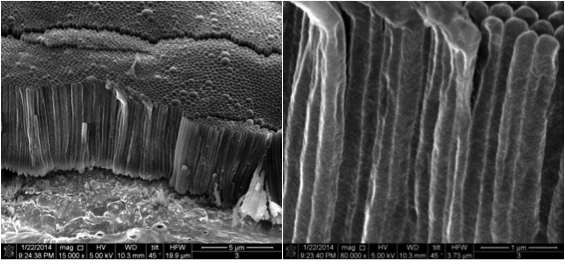
Scientific Achievement
Using an electrolyte additive that can suppress Li dendrite formation and improve the performance of Li metal batteries, we have achieved for the first time the growth of dendrite-free lithium films with self-aligned and highly-compacted nanorod structure.
Significance and Impact
The findings could help scientists design a safe and stable metallic Li anode: the Holy Grail of Li-based battery research. Ultimately, the study could pave the way for the practical application of several high energy density battery systems, including Li-S, Li-air, and other Li metal batteries for powering electric vehicles and storing renewable energy on the grid.
Research Details
- CsPF6 additive can promote the formation of a LiF-rich solid electrolyte interphase (SEI) layer on the surface of the substrate prior to Li deposition.
- The preformed SEI layer led to the formation of dendrite-free lithium films with self-aligned and highly-compacted nanorod structure
Work performed at Pacific Northwest National Laboratory (JCESR partner) Yaohui Zhang, Jiangfeng Qian, Wu Xu*, Selena M. Russell, Xilin Chen, Eduard Nasybulin, Priyanka Bhattacharya, Mark H. Engelhard, Donghai Mei, Ruiguo Cao, Fei Ding, Arthur V. Cresce, Kang Xu, Ji-Guang Zhang*, Nano Lett. 2014, 14, 6889−6896.

